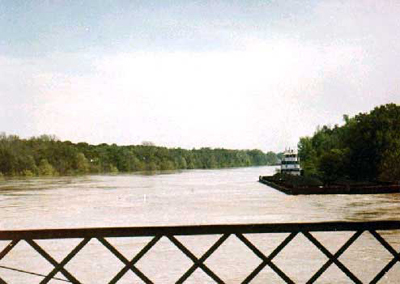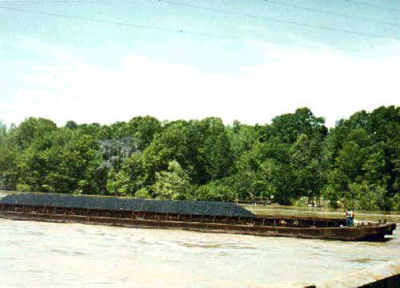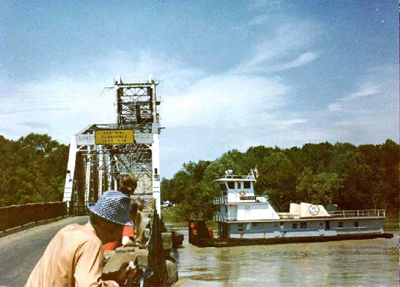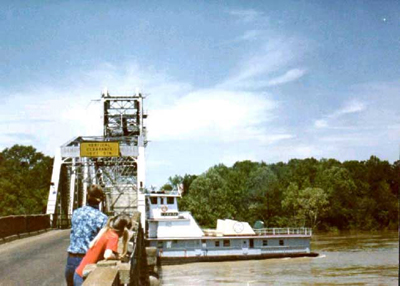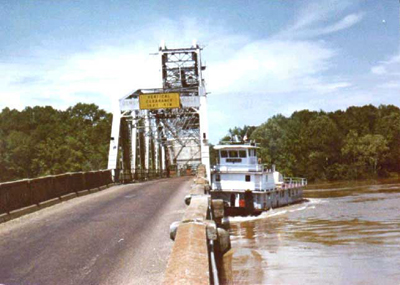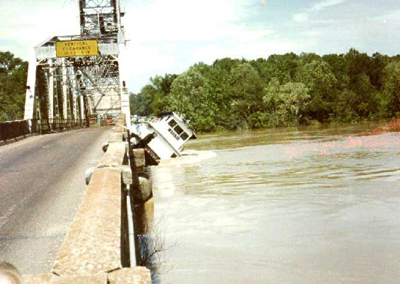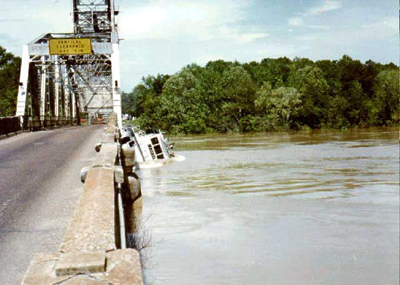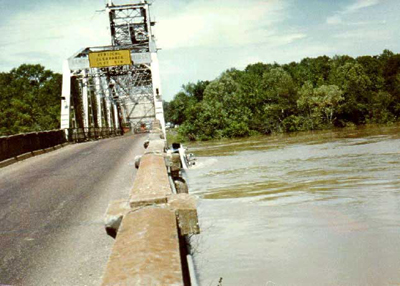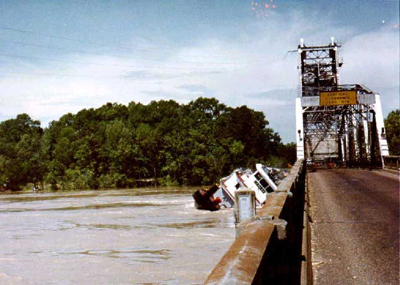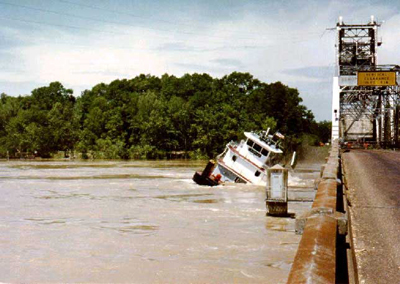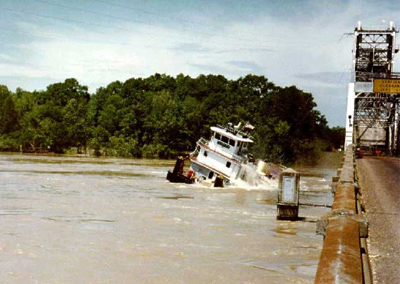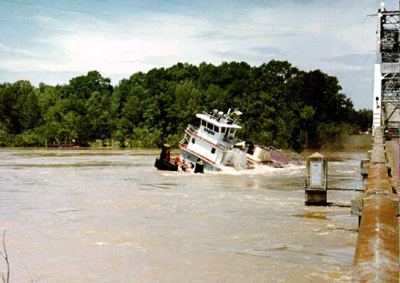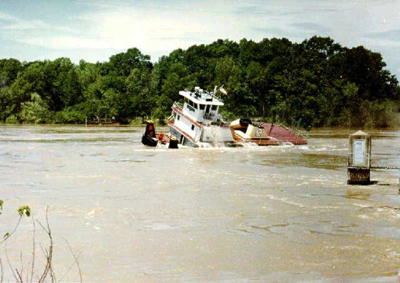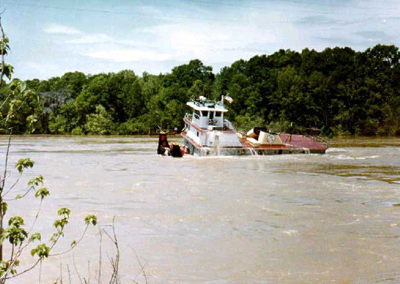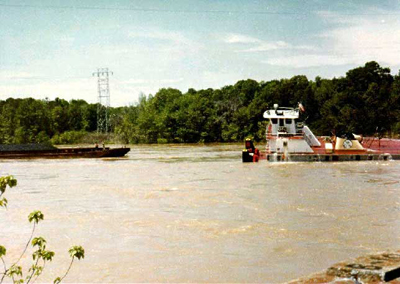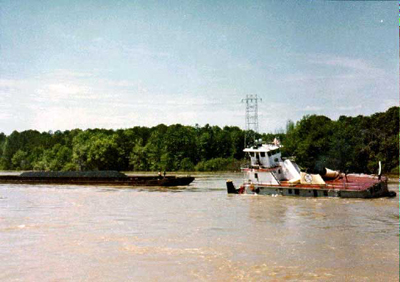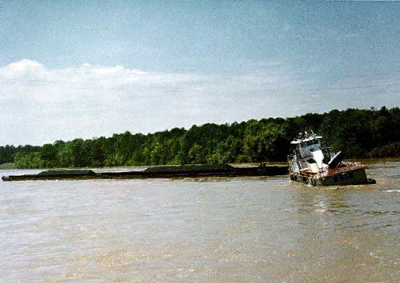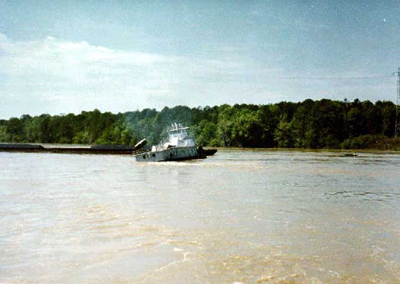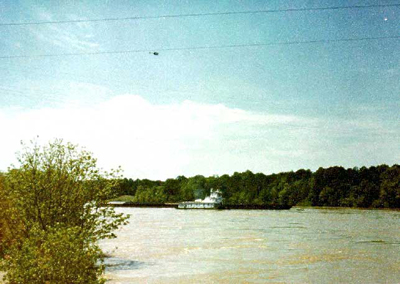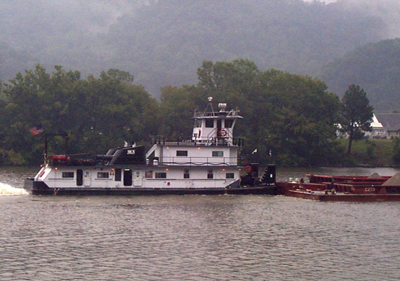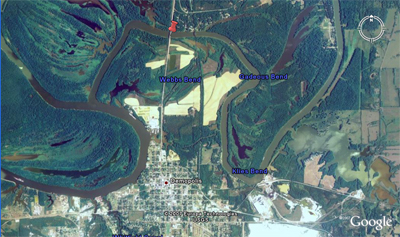The M/V Cahaba Tugboat Incident, April 28, 1979
April 28, 1979, Alabama. The 80-foot 1,800hp towboat Motor Vessel Cahaba was dropping two barges full of coal down the Tombigee River in Western Alabama, having just refueled 14 miles upstream at Demopolis, Alabama. It was owned and operated by the Warrior and Gulf Navigation of Mobile, a subsidiary of Pittsburg Steel, and was on its return trip to the McDuffie Coal Terminal at the mouth of the Mobile River to export its cargo.
At its helm stood Jimmy Wilkerson, and onboard were his pilot, Earl Barhart, as well as two deckhands.
As he approached the Rooster Bridge, a drawbridge along the Dixie Overland Highway and Route 80, he prepared to uncouple the barges, as was common practice, and to let them drift through eastern span where the currents were less harsh. The towboat would then reverse upstream and pass through the western lift span, pass through, and catch up with the barges. His deckhands proceeded to remove the rigging and the winch wires, but for some reason neglected to do so on the starboard side.
To make things worse, that year's spring had seen particularly harsh, with the river level high and the currents particularly swift. The boat, with a cable still strapping its starboard side, began to align itself with the bridge and slowly list.
Throughout the ordeal, Jimmy Wilkinson never left the helm. As he recognized that his 37-foot high towboat would be pulled into the 11-foot span of the eastern span, he yelled into his loudspeaker: "All right, y'all, this ain't no fire drill. Get off the damn bridge!"
Though the wheelhouse filled with water and Wilkinson was left holding onto the portside door frame, the boat amazingly enough righted itself at the other side, as anxious passerbys were sure that the ship was doomed. A forward-thinking reporter called Charles Barger, working for the Linden "Democrat-Reporter", quickly took his camera and snapped the photographs that we see today, testament to a series of remarkable coincidences that righted this sturdy towboat.
The main reasons that are attributed to the unthinkable resurfacing of the Cahaba are two-fold. Firstly, the ship had been refueled 14 miles upstream and had therefore a nearly full tank, which acted as ballast and prevented the boat from rolling over, not unlike a buoy. As an added benefit, the Warrior and Gulf Navigation Company had installed three to four feet of cement at the bottom of the ship.
With the notice of the M/V Tallapoosa, which was waiting to pass the Rooster bridge, and the M/V Cathy Parker, which was already downstream, they were able to shove the runaway barges into an empty cornfield downstream and come to the assistance of Wilkinson. While he was uninjured, a good friend of his, Captain Michael L. Smith, later described how at a meeting with Wilkinson a month or so later, "his hands were still shaking too much for the ash to build up to any degree"...
Though both the bridge and the boat suffered damage, the boat was swiftly repaired and put back into service. The bridge was demolished in 1980 and replaced. The M/V Cahaba was sold and rechristened on June 11, 1999, as the "Capt. Ed Harris" in Buffalo, West Virginia.
The current spot where the Old Rooster bridge used to stand. You can download the Google Earth kmz file here.
References Used
Revisiting the Cahaba Towboat Incident 25 Years Later - A Case Study
Mv. Cahaba at Old Demopolis, Ala. Bridge - April 28, 1979
Innovative Financing Tip for Communities at Their Wit's End
The Amazing Diving Tugboat!
Towboat Goes Under Bridge
The Story Behind The Tugboat Pictures
